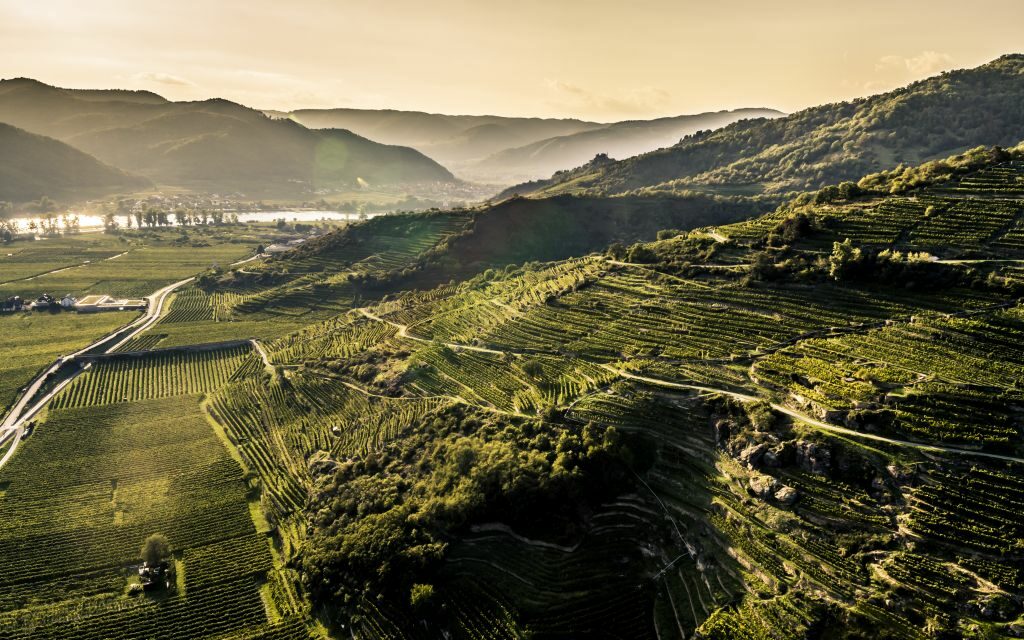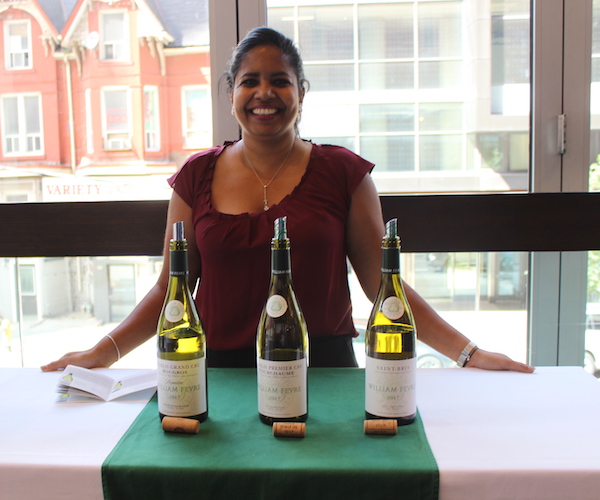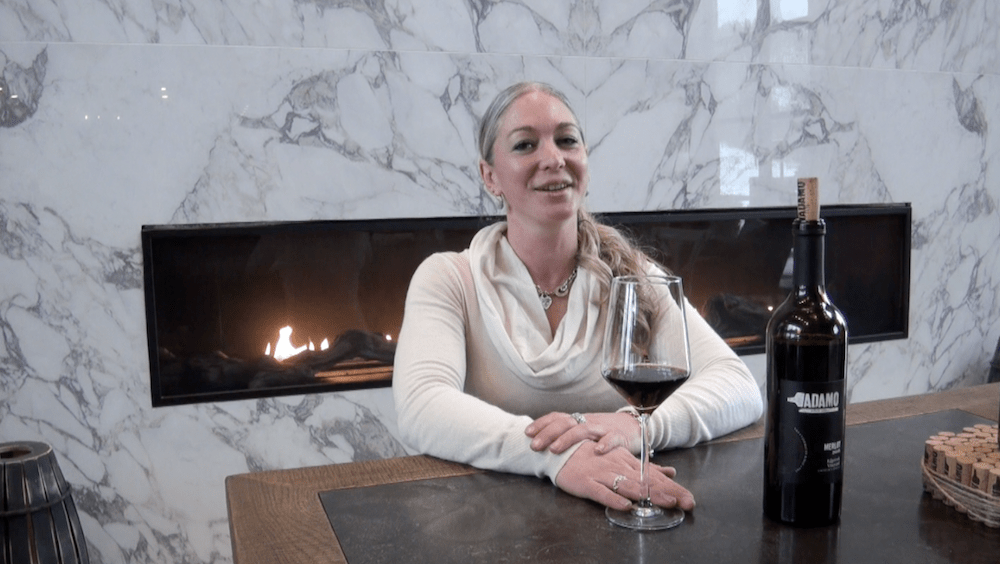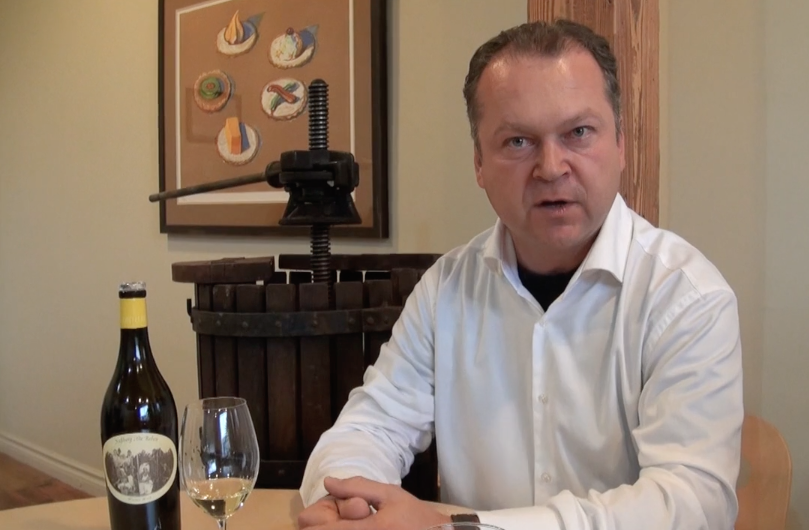Loibenberg is a famed vineyard site in Austria’s Wachau region, located in Niederösterreich or “Lower Austria” along the Danube, west of Vienna and Krems an der Donau.
Weathered Primary Rock Soil With Loess Deposits
Wachau is one of the westernmost wine regions in the country and faces directly south, marking the entrance to the Wachau Gorge, where over millions of the years the Danube has carved its meandering path through old crystalline rock consisting of various solid gneisses (metamorphic rocks with a banded or foliated structure, typically coarse-grained and consisting mainly of feldspar, quartz, and mica), amphibolites (a grouping of rocks composed mainly of amphibole and plagioclase feldspar, with little or no quartz), marbles (metamorphic rock formed when limestone is exposed to high temperatures and pressures), and quartzites (hard, non-foliated metamorphic rock which was originally pure quartz sandstone). These ancient crystalline rocks now form the steep terraced slopes of the Danube river.
As a point of interest, the dark amphibolites, found frequently as basic strata alternating with paragneisses, can be traced back to lava that once poured from underwater volcanoes.
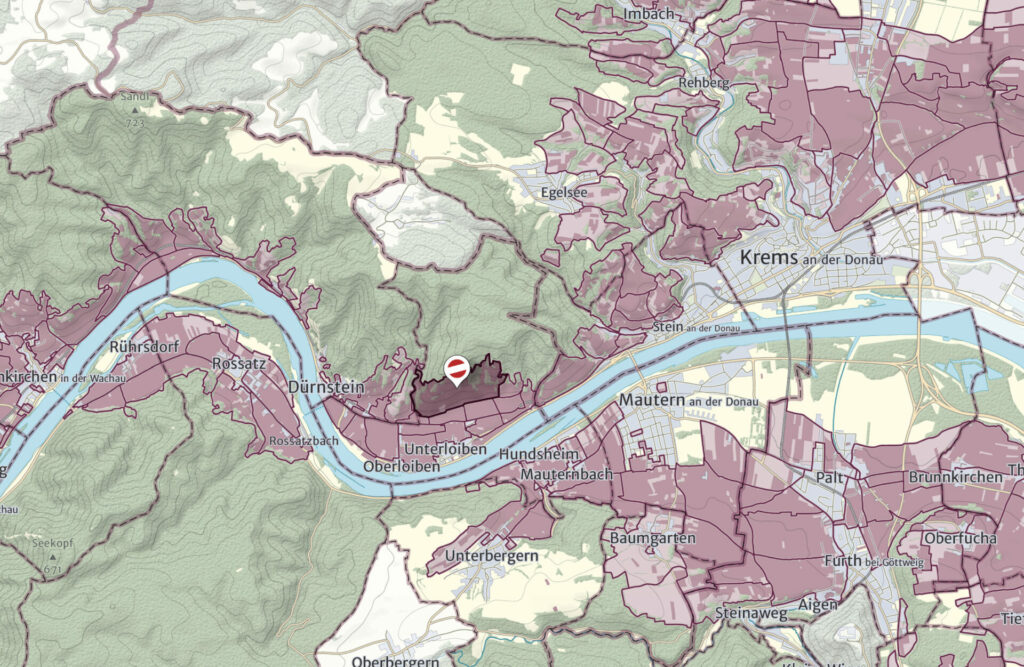
The Most Diverse Cru Of The Wachau?
Loibenberg is one of the most historied vineyards in the Wachau, with mentions of it dating all the way back to 1253. The west-southeast oriented vineyards with inclinations of up to 77% are made up of some 31 ha of vineyards between 213 to 396m above sea level. Due to warm air currents, it is often very hot, which is why the Loibenberg is occasionally referred to as the “hearth of the Wachau”.
An interesting characteristic of the Loibenberg is that, unlike many areas, it is not criss-crossed by ditches or valleys. The naked primary rock is responsible for much of the vineyard’s wines’ main characteristics, with the deposits of loess found in bays and valleys adding nuance. The varying altitude, changing soils, and the small average size of the myriad plots makes the Loibenberg one of the most inhomogeneous crus of the Wachau.
Due to Loibenberg ’s size and the sizable variances in altitude, there are four sub-designations: Langen Zung, Rauheneck, Rothenberg, and Süßenberg.
A Matter Of Gneiss (And Loess)
When it comes to subsoil, we are talking gneiss, and the predominant form in Loibenberg is the finely folded Gföhler gneiss, a hard orthogneiss metamorphic rock that was derived from an acidic, igneous, granitic parent rock.
This Gföhler gneiss is quite distinct from the widely-varied paragneisses (gneisses derived from sedimentary rock, such as sandstone) found elsewhere in Niederösterreich, and the solid granodiorite (read: phaneritic-textured intrusive igneous rock similar to granite, but containing more plagioclase feldspar than orthoclase feldspar) Late-Proterozoic era gneiss of Spitz.
It is important to note that not all of the subsoil here is solid rock, as much is weathered and fissured, and can be easily penetrated by persistent vine roots.
During the Ice Age, when there was little vegetation present, atmospheric rock dust settled onto the leeward-facing slopes of the mountains, forming chalk-rich, blanket-like layers of loess on the eastern faces of the crystalline slopes; in some areas, like Rothenberg, there are enormous loess drifts.
The lower reaches of Loibenberg have considerably more loess deposits, and it is here, on those terraces with more loess, occasionally more than a metre deep, and hence those soils have more water retention, where one will find Grüner Veltliner. This grape variety can be quite needy with regards to both water and nutrition.
The deeper-rooting Riesling, on the other hand, is predominantly planted on the rockier terraces with very little loess, where it is stressed to reveal its true potential and structure.
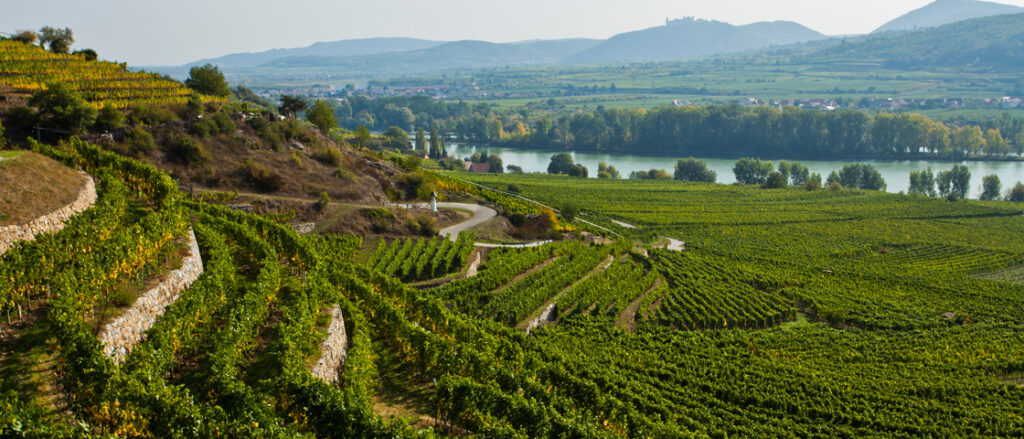
A Unique Landscape With Unique Wines
Whether Grüner Veltliner or Riesling, over the years I have always found these wines to have a very distinct character and personality that speaks to the terroir of the Loibenberg vineyard, bringing dense, full-bodied wines that display refined fruit, intense minerality, and a real sense of power that is, for me, almost unmistakable in a blind tasting.
Loibenberg Producers To Look Out For:
FX Pichler “Ried Loibenberg Smaragd” Riesling
Alzinger “Ried Loibenberg Smaragd” Riesling
Emmerich Knoll “Ried Loibenberg Smaragd” Riesling
Rainer Wess “Ried Loibenberg” Grüner Veltliner
Pichler-Krutzler “Ried Loibenberg” Grüner Veltliner
Weingut Jurtschitsch “Ried Loiserberg” Grüner Veltliner

